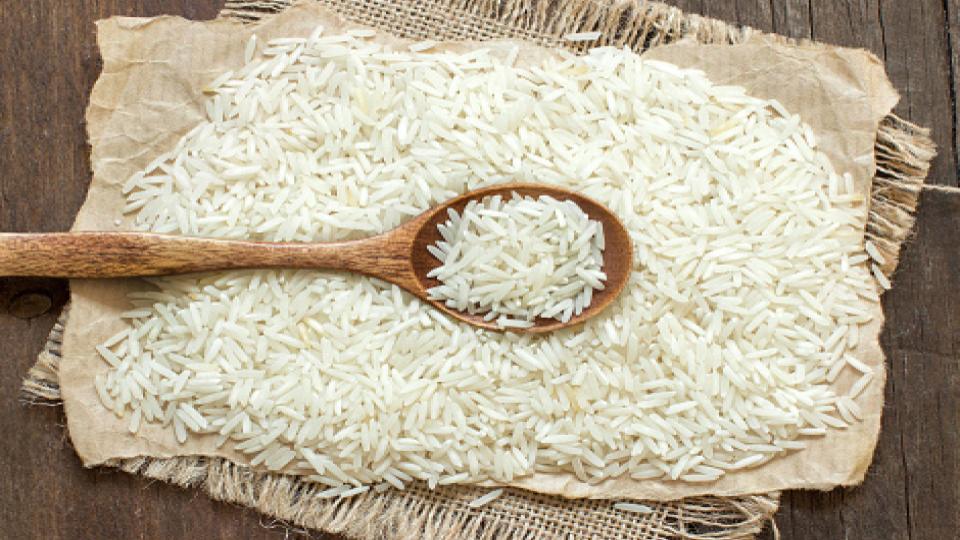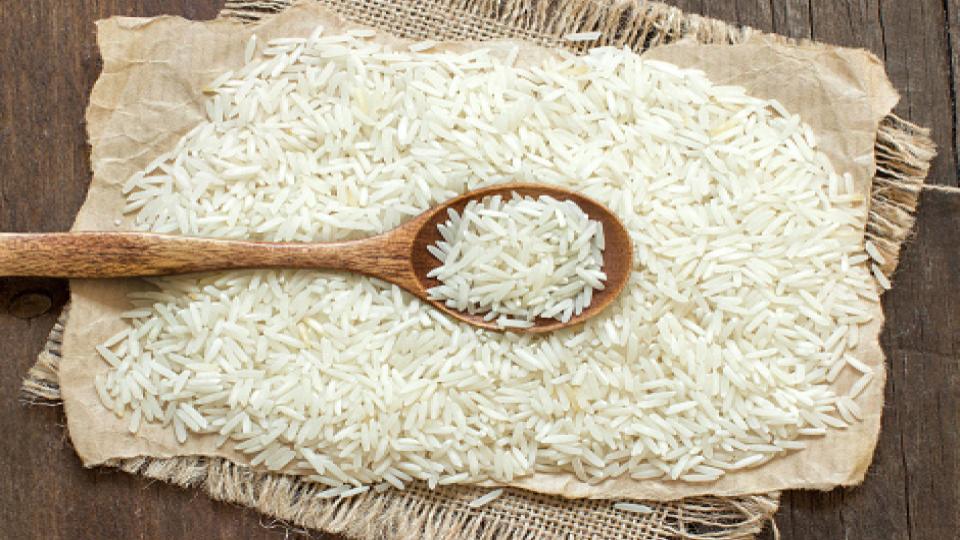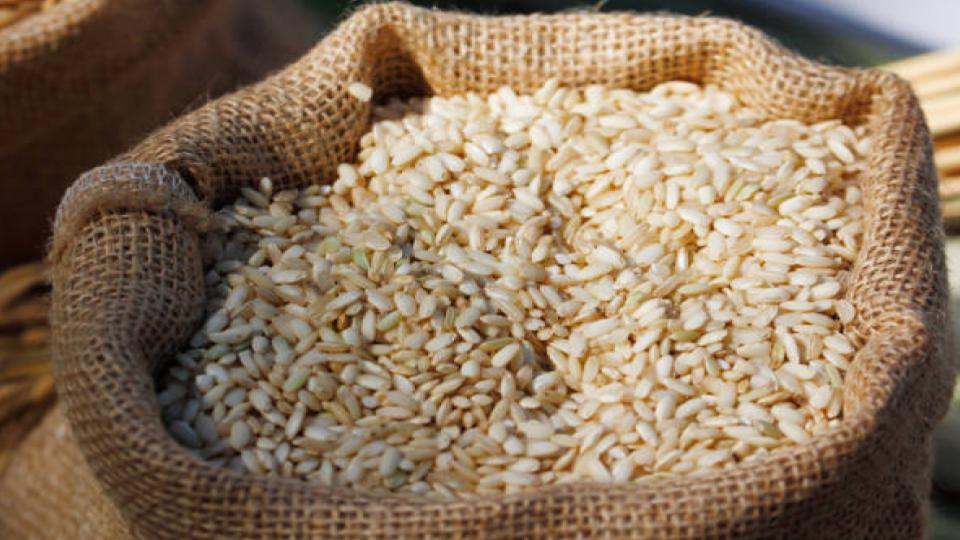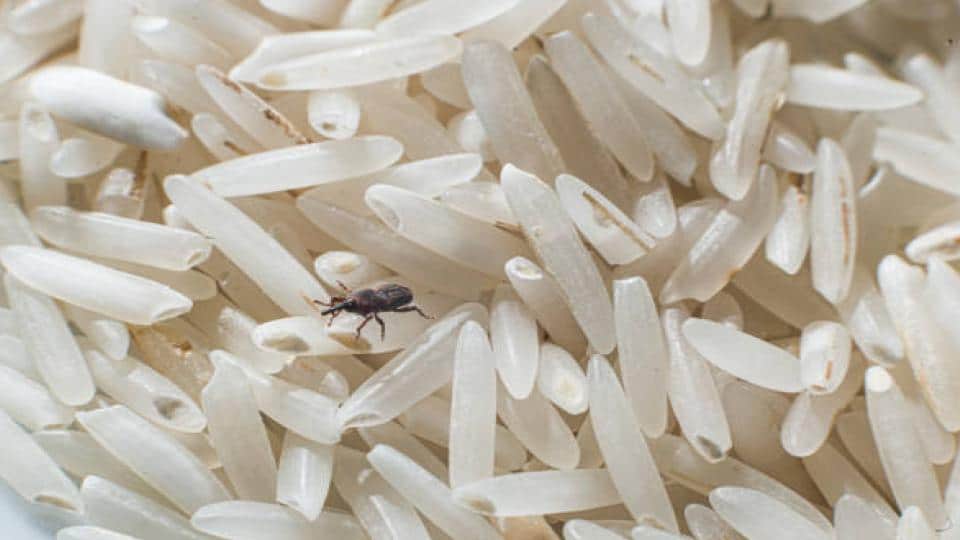How to Store Rice for a Long Time

Table
of
Contents
Whether
you
don’t
have
time
to
go
shopping
or
there
is
a
calamity
that
leaves
you
on
survival
mode,
rice
is
one
food
that
you
can
count
on.
Rice
is
also
one
of
the
easiest
foods
to
prepare,
and
you
can
eat
it
at
any
given
time
of
day
along
with
your
favorite
dishes
from
different
parts
of
the
world.
One
good
thing
about
rice
is
its
long
shelf
life.
If
you
store
it
correctly,
it
can
last
for
decades
in
your
pantry.
But
the
real
challenge
is
how
to
store
rice
long-term.
If
you
want
to
learn
how
to
preserve
rice
for
a
long
time
and
know
the
shelf
life
of
different
types
of
rice,
please
read
on…
Is
White
Rice
an
Excellent
Survival
Food?
White
rice
is
an
exceptional
source
of
food
that
can
be
stored
for
a
very
long
time.
If
stored
correctly,
different
types
of
white
rice
can
last
for
over
30
years
and
keep
your
family
fed
during
the
hard
times.

Over
the
last
few
centuries,
rice
has
been
used
for
survival
by
different
cultures.
Therefore
it
is
a
unique
option
for
an
emergency
food
pantry.
Here
is
why:
-
White
rice
is
an
excellent
source
of
complex
carbohydrate -
It
is
affordable -
If
appropriately
stored,
it
can
last
for
over
30
years -
It
is
easy
to
find -
It
is
a
filling
comfort
food -
It
feeds
over
half
the
world’s
population -
It
has
a
long
track
record
of
being
used
as
a
staple
food
Why
Is
Rice
the
Best
Food
for
Storing
Long-Term?
Rice
is
the
best
option
for
long-term
storage
because
it
is
satiating
and
affordable.
This
highly
nutritious
meal
is
excellent
for
your
physical
and
mental
health.
Rice
may
not
have
what
most
superfoods
have,
but
it
can
give
you
everything
you
need
to
remain
healthy.
Plus,
most
superfoods
are
pretty
costly
and
have
a
concise
shelf
life.

So
if
you’re
working
with
a
tight
budget,
then
you
should
purchase
rice
instead
of
other
superfoods.
After
all,
it
has
the
following
health
benefits:
-
It
can
increase
your
energy
levels -
It
normalizes
your
bowel
movement -
It
can
reduce
the
amount
of
bad
cholesterol
in
your
system -
It
lowers
the
risk
of
stroke
and
heart
attack -
It
optimizes
the
transportation
of
oxygen
in
your
body
through
your
bloodstreams
Therefore,
if
you
always
avoid
grains
because
of
celiac
illnesses
or
gluten
sensitivity,
then
fear
not!
Rice
is
an
exceptional
grain
that
is
absolutely
gluten-free.
This
means
that
you
can
eat
as
much
rice
as
you
need
without
getting:
- Diarrhea
- Fatigue
-
Excess
gas -
Abdominal
pain - Nausea
Another
reason
why
it’s
the
best
option
for
long-term
storage
is
that
it
is
very
easy
to
prepare.
Well,
can
you
boil
water?
Then
you
can
cook
it
like
a
professional.
If
you
don’t
have
the
time
to
boil
water,
you
can
cook
it
using
your
microwave.
If
you
have
a
rice
cooker,
then
you
can
easily
enjoy
a
delicious
bowl
of
steamed
rice.
Are
All
Kinds
of
Rice
Ideal
for
Long-Term
Storage?
There
are
several
rice
varieties,
but
not
all
are
the
same
in
terms
of
shelf
life.
Some
types
of
rice
can
last
longer
than
others;
for
example,
white
rice
lasts
longer
than
brown.
Therefore,
they
are
the
best
option
for
long-term
storage.

Brown
rice
has
a
husk
that
is
filled
with
natural
oils.
These
natural
oils
tend
to
go
bad
after
18
months,
regardless
of
how
you
store
them.
Thus,
brown
rice
is
ideal
for
short-term
storage
only.
Wild
rice
also
lasts
longer
than
brown
and
black
rice
when
stored
properly.
How
Long
Does
Rice
Last?
The
shelf
life
of
the
different
types
varies,
with
the
white
rice
lasting
longer
than
the
other
kinds
of
rice.
White
rice
varieties
like
Basmati,
Arborio,
Jasmine,
and
long-grain
can
last
the
longest
when
properly
stored.
White
rice
can
last
for
over
30
years
in
an
oxygen-free
container
or
freezer
and
five
years
in
the
store
packaging.
On
the
other
hand,
brown
rice
and
purple/black
rice
can
last
for
one
and
a
half
years
in
the
freezer
or
in
an
oxygen-free
container.
Brown
and
black
rice
can
last
for
a
maximum
of
6
months
in
the
store
packaging.
Another
type
of
rice
that
is
ideal
for
long-term
storage
is
wild
rice.
Wild
rice
can
last
for
over
30
years
in
the
freezer
or
an
oxygen-free
container.
It’s
worthwhile
to
note
that
wild
rice
is
also
the
only
type
of
rice
that
can
last
for
over
a
decade
in-store
packaging.
But
if
you’re
not
careful,
your
stored
rice
may
be
infested
by
rice
bugs.
After
all,
most
rice
comes
with
weevil
eggs
that
can
hatch
under
suitable
conditions.
What
Are
Rice
Bugs?

You
may
not
notice
them,
but
most
likely,
the
rice
you
have
just
purchased
has
insect
eggs.
The
eggs
may
belong
to
weevils
or
moths,
and
when
left
in
the
pantry
for
a
long
time,
they
can
hatch
and
grow
into
adults.
Adult
weevils
can
lay
more
eggs
resulting
in
a
severe
bug
infestation.
Fortunately,
rice
weevils
are
safe,
and
they
can
even
introduce
some
nutrients
to
your
meal.
So
eating
pest-infested
food
may
not
be
harmful
to
your
health.
But
most
folks
don’t
like
the
idea
of
consuming
insects,
so
they
end
up
throwing
the
infested
rice
away.
How
Can
You
Kill
Rice
Bugs
and
Their
Eggs?
As
aforementioned,
rice
comes
with
bugs;
in
fact,
the
flour
in
the
pantry
also
came
with
bug
eggs.
So,
before
storing
them,
make
sure
all
the
eggs
are
dead.
Fortunately,
there
are
methods
you
can
use
to
kill
these
bugs
and
their
eggs,
and
some
of
the
most
effective
ones
include:
-
Freezing
the
rice
for
three
days
before
storing
it:
freezing
the
rice
will
kill
the
eggs
before
hatching.
It
will
also
destroy
the
grown
weevils,
larvae,
and
pupae
if
they
are
already
present
in
the
rice. -
Hermetically
seal
the
rice
and
put
it
in
an
oxygen
absorber:
this
method
is
unique
since
it
gives
you
additional
years
while
killing
the
bugs.
Airtight
containers
with
no
oxygen
can
also
help
you
kill
the
eggs
within
2
weeks.
What
Is
the
Shelf
Life
of
Instant
Rice?

Instant
rice
is
a
type
of
rice
that
has
been
precooked
and
is
microwave-ready.
Some
instant
rice
products
are
dehydrated
so
that
they
can
cook
faster
when
you
finally
get
to
boil
them.
The
shelf
life
of
instant
rice
is
about
two
years.
The
best
place
to
store
them
is
in
a
cool
and
dry
place
like
the
cupboard
or
pantry.
Remember,
instant
rice
can
also
be
consumed
by
household
pests,
so
you
should
ensure
that
the
packaging
is
not
torn.
Instant
rice
tends
to
have
lots
of
artificial
preservatives
that
help
them
last
longer
than
cooked
rice.
So,
if
you’re
a
health-conscious
individual,
then
you
should
stay
away
from
instant
rice.
The
sodium
added
in
instant
rice
to
make
them
taste
better
is
not
suitable
for
your
kidneys
or
heart.
How
Long
Does
Cooked
Rice
Last?
If
stored
in
the
fridge,
then
cooked
rice
can
last
for
only
7
days.
If
left
on
the
counter,
then
it
should
be
consumed
within
a
few
hours.
Otherwise,
it
will
go
bad.
Cooked
rice
is
full
of
moisture
that
can
promote
the
growth
of
bacillus
cereus
which
is
naturally
found
in
rice.
The
toxins
produced
by
these
bacteria
can
cause
food
poisoning
and
vomiting.
Therefore,
you
should
put
it
in
an
airtight
container
and
store
it
in
the
freezer.
Otherwise,
it
will
become
soggy
and
start
producing
a
foul
smell.
Best
Methods
for
Storing
Rice
Like
all
the
other
dry
staple
foods,
this
can
also
go
bad,
especially
when
subjected
to
light,
heat,
oxygen,
or
moisture.
But
for
rice,
moisture
is
its
main
problem,
mainly
since
it
acts
like
a
sponge.
If
stored
in
a
place
with
high
humidity,
it
will
absorb
moisture
and
become
moldy
within
a
few
days.
Light,
heat,
and
oxygen
can
also
make
whole
grains
go
bad.
Heat,
light,
and
oxygen
can
make
the
healthy
oils
in
rice
rancid
very
fast.
This
is
why
white
rice
can
get
spoiled
when
exposed
to
high
temperatures.
Therefore,
the
best
storage
method
should
help
eradicate
all
these
factors
for
the
rice
to
last
longer.
But
most
importantly,
never
store
rice
in
its
store
packaging.
Remember,
if
the
rice
is
infested,
then
the
packaging
is
not
safe.
To
keep
the
rice
bugs
away,
you
can
try
the
following
storage
methods:
Airtight
Containers
Most
foods
are
usually
kept
in
airtight
containers
to
prevent
them
from
going
bad.
Airtight
containers
also
protect
the
foods
from
the
pests
that
are
normally
attracted
to
them.
But
rice
should
never
be
stored
in
an
airtight
container
as
it
can
shorten
its
shelf
life.
The
main
issue
with
airtight
jars
is
that
they
make
the
rice
sweat,
leaving
it
moist.
Remember,
nothing
can
attract
mold
into
the
jar
than
moisture.
So
if
you
use
airtight
containers,
make
sure
you
keep
the
moisture
it
creates
away
from
the
rice.
The
main
benefit
of
airtight
jars
is
that
they
can
keep
the
rice
bugs
away.
And
if
the
eggs
hatch,
they
won’t
leave
and
infest
the
other
foods
stored
in
the
pantry.
Using
an
airtight
container
is
cheaper
than
the
other
storing
methods,
but
you
will
need
some
oxygen-absorbing
packets.
The
plastic
or
glass
used
to
make
these
containers
allows
light
to
pass
through,
so
you
will
have
to
keep
them
in
a
dark
place.
Small
jars
like
mason
jars
can
come
in
handy
when
storing
rice
as
they
can
only
store
a
small
amount
of
rice
before
being
vacuum
sealed.
When
working
with
a
mason
jar,
remember
to
make
a
note
of
the
following:
-
To
make
the
storing
process
worth
your
time,
you
should
purchase
a
huge
bag
of
rice. -
Assuming
that
each
bag
of
rice
comes
with
bug
eggs,
make
sure
you
kill
the
bugs
first.
So,
you
should
either
use
oxygen
absorbers
or
freeze
the
rice
for
3
days
to
kill
the
eggs
and
bugs. -
Pour
the
rice
in
some
clean
mason
jars. -
Add
an
oxygen
absorber
in
all
the
jars
and
place
the
lids
on
them. -
Seal
the
jars
using
a
food
saver
that
has
a
jar
attachment -
After
sealing
the
jars,
you
can
store
them
in
a
dry,
cool
place
Freezer
Just
like
the
other
food
items,
you
can
also
stash
your
rice
in
the
freezer
to
prevent
it
from
going
bad.
In
fact,
this
is
one
of
the
solutions
to
deal
with
rice
bugs
and
their
eggs.
The
only
problem
is
you
really
cannot
store
huge
amounts
of
raw
rice
in
a
normal
freezer,
and
you
may
need
an
industrial-purpose
freezer.
Another
benefit
of
a
freezer
is
that
you
can
use
the
store
packaging
if
it
fits
perfectly
in
your
freezer.
If
the
store
packaging
is
too
big,
you
can
pour
some
rice
into
freezer-safe
containers
and
store
them.
The
freezer
can
help
keep
your
white
rice
fresh
for
over
30
years,
but
it’s
not
the
best
option.
Why?
Because
you
have
to
consider
what
happens
in
case
of
a
power
outage.
If
the
freezer
shuts
down,
condensation
can
build
up
inside,
and
the
rice
will
absorb
the
moisture.
There’s
also
the
possibility
that
your
freezer
could
also
stop
working
or
maintain
the
correct
environment
for
storing
the
rice.
Cooked
rice
can
also
be
stored
in
the
freezer
for
a
week
if
it’s
stored
correctly.
But
before
freezing
cooked
rice,
you
should
ensure
that
it’s
at
room
temperature.
If
you
put
hot
rice
in
the
freezer,
it
will
collect
moisture
while
cooling
down,
and
this
will
make
it
go
bad
faster.
Vacuum
Sealing
Even
though
it’s
not
the
best
option
for
storing
white
rice,
vacuum
sealing
can
give
white
rice
a
shelf
life
of
about
four
years.
The
main
problem
with
this
method
is
that
most
vacuum-sealer
bags
aren’t
airtight.
Therefore,
they
will
allow
moisture
and
air
to
flow
into
the
bag.
Plus,
white
rice
can
last
longer
in
a
standard
storage
container,
so
you
won’t
be
gaining
much
with
vacuum
sealing.
On
the
other
hand,
brown
rice
can
benefit
a
lot
from
vacuum
sealing
as
it
can
increase
its
shelf
life
to
over
two
years.
Brown
rice
is
susceptible
to
oxygenation,
which
can
damage
it,
so
vacuum
sealing
it
can
improve
its
shelf
life.
Remember,
rice
has
sharp
edges
that
can
easily
damage
the
vacuum
sealer
bag.
So
you
should
consider
lining
the
vacuum-sealer
bags
before
adding
the
rice.
Container
With
an
Oxygen
Absorber
Most
folks
prefer
getting
vast
amounts
of
rice
at
once
and
storing
them.
After
all,
purchasing
small
portions
of
rice
now
and
then
can
be
pretty
costly
and
time-consuming.
However,
leaving
the
rice
in
the
store
packaging
is
not
the
best
long-term
storage
idea;
you
may
need
some
huge
containers.
Large
containers
are
great
if
you
have
more
than
enough
space
to
store
them.
But
if
you
are
worried
about
pest
infestation,
then
you
should
opt
for
small
containers.
With
small
containers,
only
a
small
batch
of
the
rice
will
be
ruined
by
the
bugs.
To
put
it
simply,
using
a
container
with
an
oxygen
absorber
is
the
simplest
long-term
storing
method
on
the
planet.
All
you
have
to
do
is
get
a
clean
container
like
a
food-grade
bucket
or
jar,
and
you
are
good
to
go.
You
can
even
add
oxygen
absorber
packets
to
the
container,
and
your
food
will
be
safe.
The
oxygen
absorber
packet
will
prevent
oxidation
and
make
it
possible
for
your
rice
to
last
longer.
Plus,
without
oxygen,
the
bugs
will
die,
and
the
eggs
won’t
hatch.
Unfortunately,
the
seals
on
recycled
jars,
plastic
containers,
and
buckets
are
not
reliable.
These
seals
will
eventually
start
leaking
in
air
and
moisture.
Another
problem
with
using
huge
plastic
jars
is
that
you
will
be
exposing
huge
amounts
of
rice
to
the
elements.
Because
of
this,
you
may
have
to
add
a
new
oxygen
absorber
packet
every
time
you
open
your
container.
Mylar
Bag
With
an
Oxygen
Absorber
This
is
by
far
the
best
option
for
long-term
storage
for
both
brown
and
white
rice.
Mylar
bags
can
help
create
a
barrier
between
the
rice
and
elements.
When
oxygen
absorbers
are
added
into
the
bags,
it
can
guarantee
rice
shelf
life
of
over
30
years.
Sealing
them
after
adding
rice
is
relatively
easy;
all
you
need
is
an
ordinary
iron.
Since
these
bags
are
metallic
and
impermeable,
your
rice
will
be
protected
from
insects,
light,
and
oxidation.
Mylar
bags
are
ideal
for
folks
who
love
storing
their
food
in
small
portions.
So,
you
can
place
the
bags
in
a
food-grade
bucket
and
enjoy
your
rice
for
the
next
few
years.
Remember,
food-grade
buckets
expose
a
considerable
amount
of
rice
to
the
elements,
but
with
Mylar
bags,
your
rice
will
be
safe.
Plus,
they
can
come
in
handy
when
you
don’t
have
a
cool
and
dark
place
to
store
the
rice.
If
you’re
working
with
a
large
amount
of
rice,
then
you
can
keep
your
Mylar
bags
in
a
big
plastic
container.
FAQs
Can
I
store
cooked
rice
long-term?
Yes,
but
this
depends
on
the
type
of
rice
you
have
and
your
storage
method.
For
example,
white
rice
can
last
for
over
30
years
if
stored
in
Mylar
bags
or
four
years
in
airtight
containers.
On
the
other
hand,
brown
rice
can
last
eight
months
in
airtight
containers
and
five
years
in
Mylar
bags.
Therefore,
your
storage
method
really
matters
when
it
comes
to
the
shelf
life
of
your
rice.
Does
white
rice
last
longer
than
instant
rice?
Yes,
white
rice
lasts
longer
than
instant
rice
that
has
been
stored
properly.
White
rice
can
last
for
over
three
decades,
while
instant
rice
can
last
for
only
two
years.
So
make
sure
you
store
your
instant
rice
in
a
dry
and
cool
area
for
it
to
last
longer.
Note
that
pests
can
also
infest
instant
rice.
Why
can’t
I
store
brown
rice
long-term?
Unlike
white
rice,
brown
rice
comes
with
an
outer
husk
rich
in
fatty
acids
and
oil.
These
oils
tend
to
oxidize
with
time,
so
you
can’t
store
brown
rice
long-term.
The
best
you
can
do
is
store
it
in
Mylar
bags
for
about
five
years.
But
if
exposed
to
light
and
oxygen,
it
will
undergo
oxidation
and
get
spoiled.
What
is
the
best
way
to
store
Basmati
rice
long-term?
The
best
method
for
storing
uncooked
Basmati
rice
in
your
pantry
is
in
oxygen-free
containers.
You
can
also
store
them
in
Mylar
bags
and
add
oxygen
absorbers
to
keep
your
rice
safe.
Remember,
just
like
other
foods,
make
sure
you
store
them
in
a
dry
and
cool
place.
Plus,
packaged
basmati
for
storing
for
over
30
years
is
available.
Can
storing
rice
with
bay
leaves
keep
the
bugs
away?
Yes,
bay
leaves
are
the
best
solution
for
protecting
the
rice
that
is
in
rotation
from
bugs.
Remember,
containers
are
not
genuinely
bug-free
or
airtight.
So,
after
removing
the
rice
you
want
to
cook,
you
can
add
an
air
absorber
packet
and
bay
leaves
before
sealing
the
container.
How
can
you
store
rice
in
warehouses?
Generally,
the
bags
should
be
stacked
on
top
of
a
ground
structure
or
on
pallets
to
prevent
the
rice
from
absorbing
moisture.
The
rice
should
also
not
be
stacked
on
rice
husk
as
keeping
bugs
away
from
rice
husks
can
be
very
hard.
Stacking
them
in
bags
of
rice
husks
can
result
in
the
bugs
migrating
to
the
bags
of
rice
and
damaging
your
staple
food.
Conclusion
Generally,
the
different
types
of
rice
have
varying
shelf
lives.
Some
grains
like
white
rice
can
last
for
over
30
years,
while
brown
rice
can
last
for
only
5
years.
But
for
them
to
last
this
long,
you
have
to
master
how
to
store
rice
long
term.
Remember,
rice
can
be
damaged
by
light,
oxidation,
moisture,
and
rice
bugs.
So
the
best
storage
solution
should
eradicate
all
these
factors
while
making
it
easy
for
you
to
remove
some
rice
when
you
want
to
cook.
The
best
storage
method
that
guarantees
you
30
years
is
using
a
Mylar
bag
with
an
oxygen
absorber.
